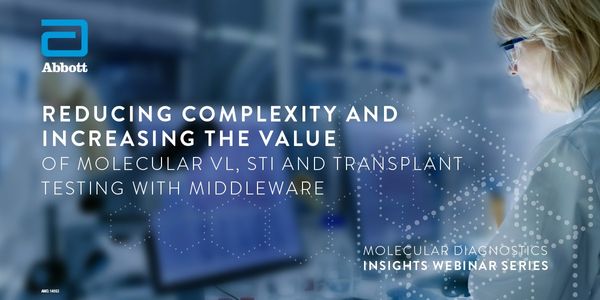Chemistry
Chemistry: the branch of science that deals with the identification of the substances of which matter is composed; the investigation of their properties and the ways in which they interact, combine, and change; and the use of these processes to form new substances.
-
Digital spatial profiling (DSP) on the NanoString GeoMx platform enables high plex molecular profiling of clinical tissue samples. This new profiling strategy enables deep insights into the...Speaker: Sarah Warren, PhDPresented at: Drug Discovery & Development Virtual Event Series 2020
Sponsored By: NanoString Technologies
QIAGEN CLC Genomics Workbench is a powerful solution to analyze and visualize next generation sequencing (NGS) data. Powered by cutting-edge technology and accelerated algorithms, it support...
Speaker:
Leif Schauser, PhD
FEB 26, 2020 | 9:00 AM
DATE: February 26, 2020 TIME: 9:00am PST 3D cell culture and analysis and the study of organoids and spheroids are becoming more prevalent as a research method in publications as traditional...
CRISPR revolutionized gene editing, but multi-target screening remains a complex goal. In addition, the fast pace of CRISPR technology development has brought sophisticated options for libra...
Speaker:
Andrew Ravanelli, PhD
Recent advances in DNA sequencing and omics-based capabilities are revealing incredible therapeutic opportunities and quickly transforming drug discovery. Molecularly targeted drugs aim to e...
FEB 19, 2020 | 11:00 AM
DATE: February 19, 2020TIME: 11:00am PST, 2:00pm EST...
FEB 18, 2020 | 8:00 AM
DATE: February 18, 2020 TIME: 8:00am PST...
FEB 14, 2020 | 10:00 AM
DATE: February 14, 2020 TIME: 10:00am PT, 1:00pm ET Separation challenges arise in the lab on a daily basis and you rely on a broad analytical toolset to help solve them. In this presentatio...
The compendium of newly emerging and currently available hemophilia and anticoagulant treatments, while offering new choices for improved patient care, can create significant levels of inter...
Speaker:
Donna Castellone, MS, MASCP, MT(ASCP) SH
JAN 30, 2020 | 9:00 AM
DATE: January 30, 2020 TIME: 9:00am PST, 12:00pm EST Recent advances in in vitro 3D cellular culture technologies, such as organoids, rapidly developed and established novel, more physiologi...
JAN 15, 2020 | 10:00 AM
DATE: January 15, 2020 TIME: 10:00am PST Genomics, personalized medicine and cost stewardship are just a few of the forces behind the need for better management of discrete testing informati...
Speaker:
Michael D. Sutch, CPHQ (NAHQ), PMP (PMI) and MT(ASCP)
Sponsored By: Abbott Molecular Diagnostic
JAN 14, 2020 | 9:00 AM
Fecal elastase-1 – a biomarker for pancreatic exocrine insufficiency(EPI) continues to gain traction as an ideal biomarker for assessing EPI. This presentation will include a review of...
With an increasing push to improve safety, efficacy, and efficiency throughout the drug development pipeline, researchers are evermore looking to improve the predictive capacity of their in...
The liver plays a critical role in the metabolism and clearance of more than 70% of marketed drugs. Furthermore, toxicity to the liver is a major reason for preclinical and clinical drug fai...
“The poor translatability of early-stage preclinical models is a major setback in oncology drug development. Immortalized cell lines, that are extensively used in drug screens, undergo...
























